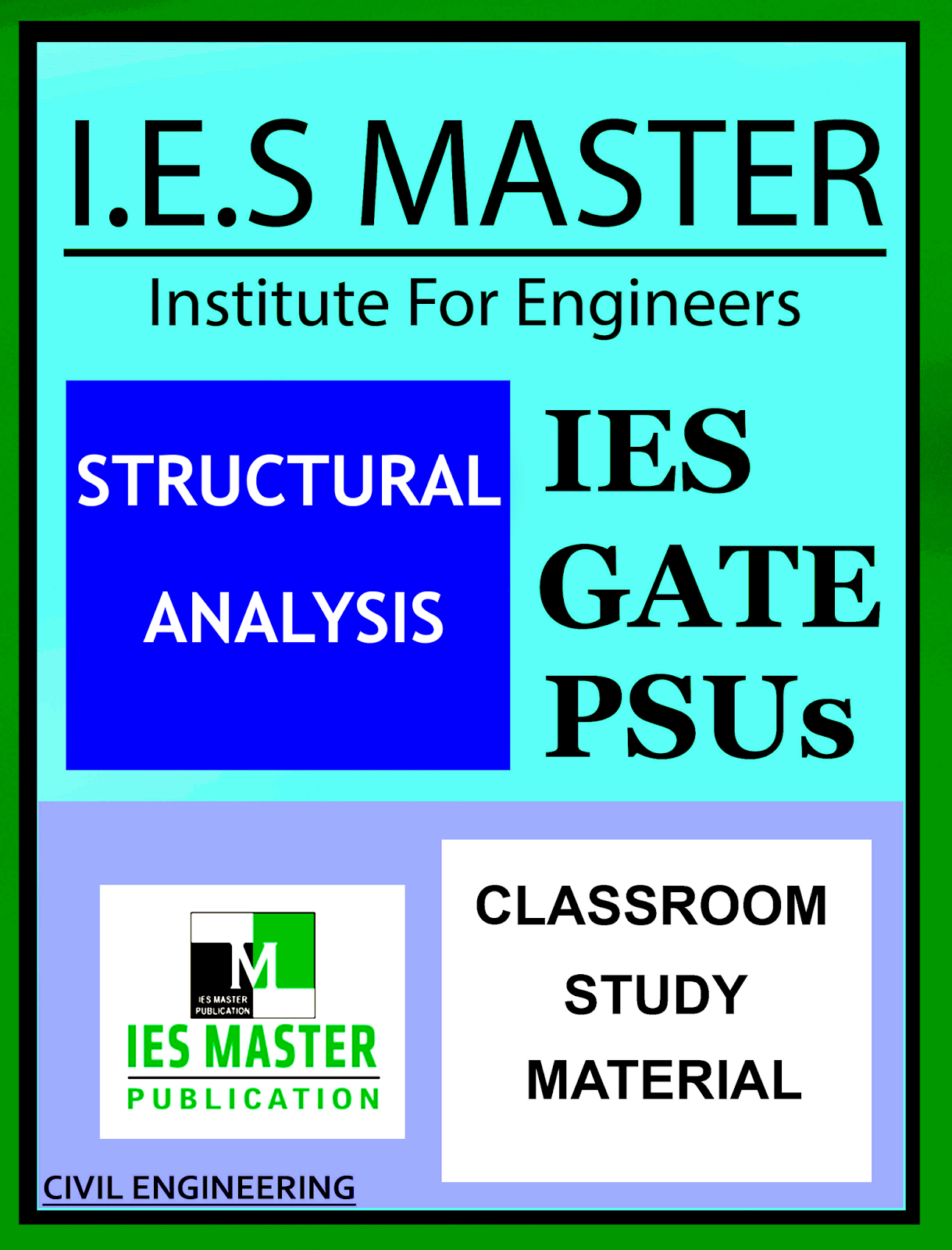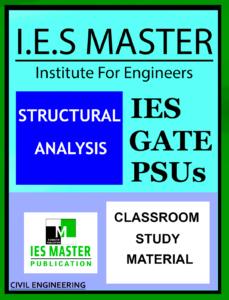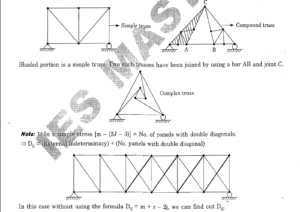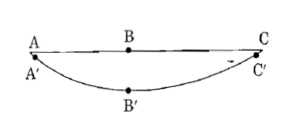
Table of Contents
IES MASTER GATE MATERIAL
STRUCTURAL ANALYSIS
GATE – PSU – IES – GOVT EXAMS – STUDY MATERIAL
FREE DOWNLOAD PDF


CONTENTS
- DETERMINACY INDETERMINACY AND STABILITY OF STRUCTURES
- FORCE METHOD OF ANALYSIS (STATICALLY INDETERMINATE STRUCTURES)
- DISPLACEMENT METHOD OF ANALYSIS (SLOPE DEFLECTION METHOD)
- DISPLACEMENT METHOD OF ANALYSIS (MOMENT DISTRIBUTION METHOD)
- TRUSSES
- INFLUENCE LINE DIAGRAM
- MATRIX METHODS OF ANALYSIS
INTRODUCTION TO STRUCTURAL ANALYSIS : The main aim of structural analysis is to find forces and moments in various components of structures. If these forces can be found out by the use of equation of static equilibrium, the structure is called Statically Determinate.
Degree of Static Determinacy Ds = (Number of unknown forces in members or at support reactions – Equations of static equilibrium available)
SIMPLE, COMPOUND AND COMPLEX TRUSSES :
Simple Truss : In a triangle, when two bar are one joint are progressively added to form a truss, the truss is called Simple Truss.
Compound Truss : Two simple trusses connected by a set of joints and bars is called a Compound Truss.
Complex Truss : There is no joint where only two bars meet.

Purposes of choosing statically indeterminate structures as compared to statically determinate ones are as follows:
(a) For n given loading the maximum stress and deflection of an indeterminate structures are generally smaller that in statically determinate structure.
(b) Indeterminate structures have a tendency to redestribute its load to its redundant supports in case where faulty design or overloading occurs.

As load p is increased, plastic hinge will form at supports first and hence it will be treated as simply supported structures. Further load can also be resisted. However, in case of simple supports hinge will form at center hence collapses will be early.
Although there well be cost saving in material due to lesser stress in member, the cost of construction of supports and joint may some time offset the saving in material.
Differential settlement of supports, temperature variation, change in length due to fabrication errors in indeterminate structures will introduce internal stresses in structure
Note: In statically determinate structures internal stresses will not be introduced because of these factors.

FUNDAMENTAL ASSUMPTIONS IN STRUCTURAL ANALYSIS :
Principal of Superposition : The total displacement or internal loading (Stress) at a point in a structure subjected to several external loading can be determined by adding together the displacements or internal loading(stress) caused by each of the external load acting separately
Two Requirements for Principal of superposition are
1. Linear elastic response i.e., Hookers law is valid. Load is directly proportional to displacement.
2. Small displacement theory applies ie, geometry of the structure must not undergo significant change when loads are applied.
The above requirements are also the requirements for Linear Ist order analysis. Hence in our course we follow linear first order analysis.
Linear Ist Order Analysis :
- Linear means stress is proportional to strain i.e., Hooke’s law valid.
- First order analysis means the assumption that Length of ABC = Length of A’B’C” in the below figure.

- Firstly order analysis is valid for small displacement, as otherwise for large displacement, axial forces as shown below also produce moments like P-∆. Thus P-∆ effect is neglected in 1st order analysis.

However the effect of P-∆ is considered in 2nd order analysis.
Slope Deflection Method :
-
- Slope deflection method is useful to analyse indeterminate structures like continuous beams and plane frames.
- The unknowns in this method are degree of freedom i.e. slope and deflection
- Combinely these slopes and deflections are known as displacements.
- Thus slope-deflection method is a displacement method.
- This is a classical method on which moment distribution method, Kani’s method and stiffness matrix method are based.
- Analysis of a beam and frame means determination of bending moment and shear force throughout the length of the member ie determination of BMD and SFD for the member. BMD and SFD for a member of structure can be drawn if we know the internal en moments of a member. For example, if we have a fixed beam as shown below.

- Thus, in slope deflection method we establish a relationship between the degree of freedom and the member end moments. This relationship is called slope deflection relationship
- Finally by using equilibrium equation we find the slope deflection relationship to obtain the member moments.
- To find out slope-deflection relationship, method of superposition is used.
Moment Distribution Method :
INTRODUCTION :
- Moment distribution method is the most suitable manual method for analysis of continuous beams and plane frames. The method was presented by Prof Hardy Cross of USA in 1929.
- The method consists in solving indirectly the equations of equillibrium as formulated in slope deflection method without finding the displacements.
- This is an iterative procedure.
- This is also known as relaxation method.
BASIC CONCEPT :
- In this method the analysis begins by assuming each joint in the structure to be fixed. Then, by unlocking and locking each joint in succession, the internal moments at the joints are distributed and balanced until the joints have rotated to then final or nearly final positions.
Influence Line Diagram :
- An influence line represents the variation of either the reaction, shear moments or defection at a specified point in a member as a concentrated unit force moves over the member.
- Influence lines represent the effect of a moving load only at a specified point on a member, whereas shear and moment diagram represents the effect of fixed loads at all points member along the member.
- Thus influence line helps in deciding, at a glance where should the moving loads be placed on the structure so that it creates greatest influence at the specified point
SIGN CONVENTION :
Influence line for reaction +ve, if reaction acts upward
Influence line for shear and moment :
- Influence lines for statically determinate structures consists of straight-line segment.
- Influence lines for static indeterminate structures will consist of curved line segments
DOWNLOAD LINK : IES MASTER Structural Analysis Study Material for GATE PSU IES GOVT EXAMS Free Download PDF www.CivilEnggForAll.com
DISCLAIMER : THIS WEBSITE IS NOT THE ORIGINAL PUBLISHER OF THIS BOOK ON NET. THIS E-BOOK HAS BEEN COLLECTED FROM OTHER SITES ON INTERNET. ALL THE RIGHTS ON THIS BOOK BELONGS TO IES MASTER ACADEMY.

Leave a Reply